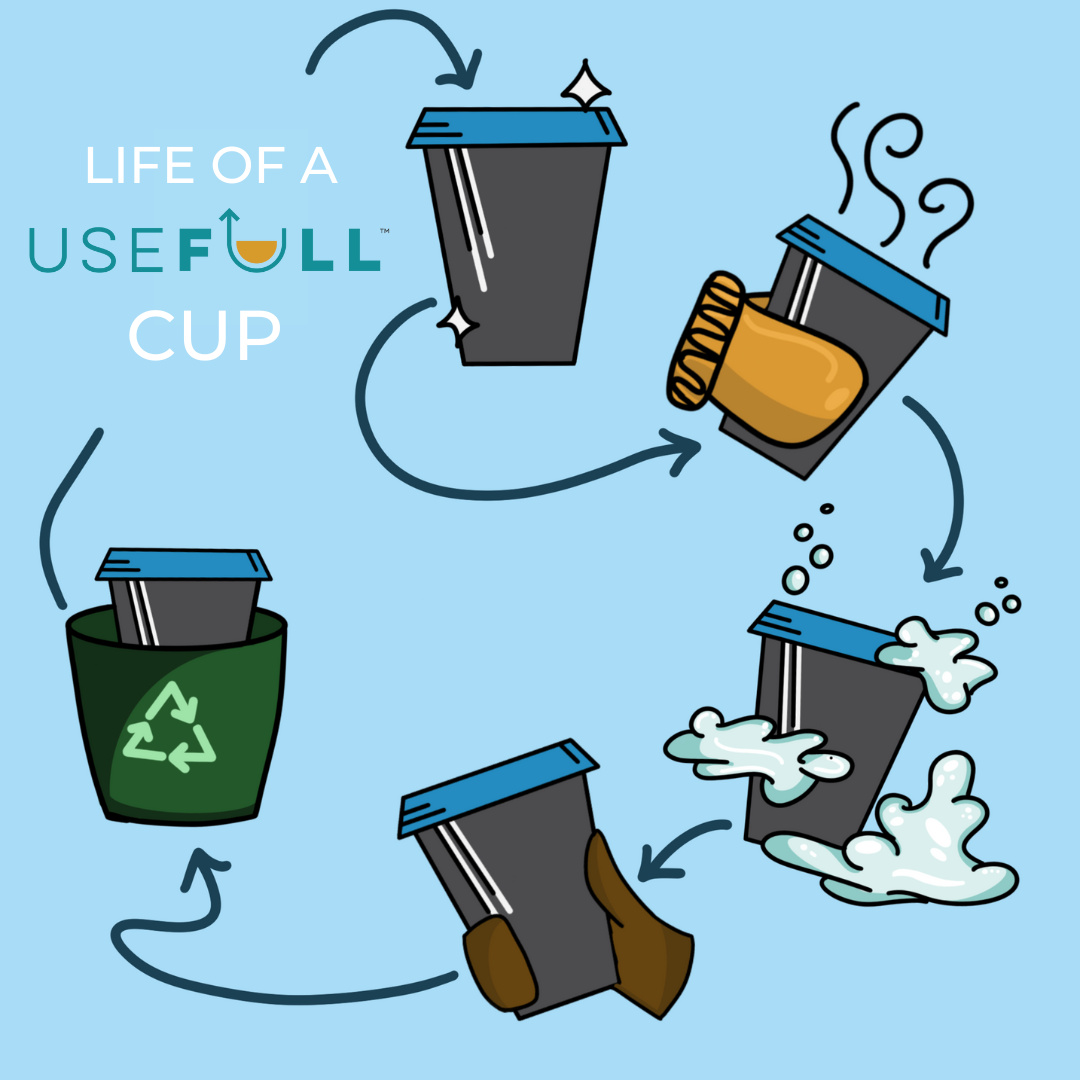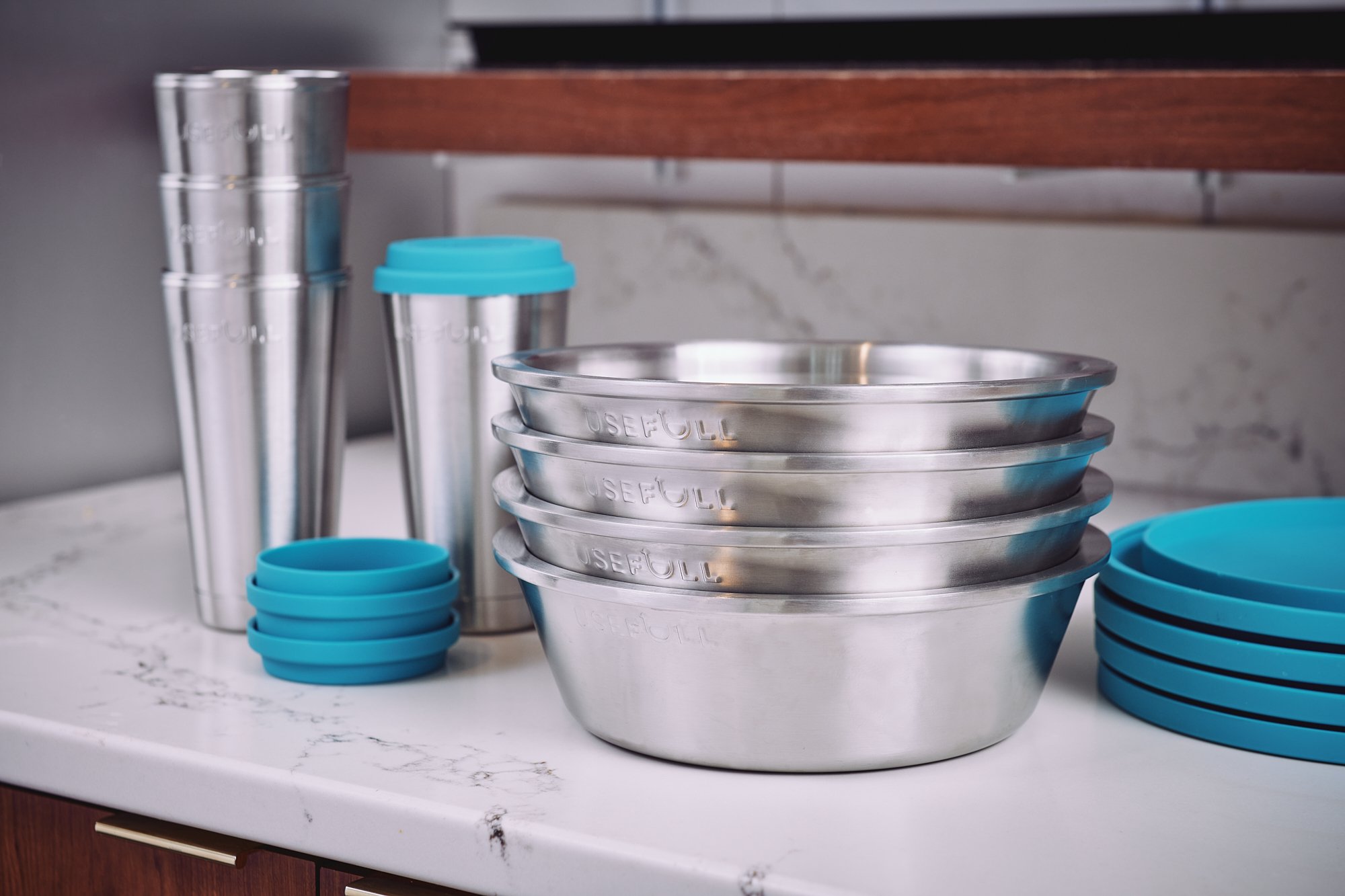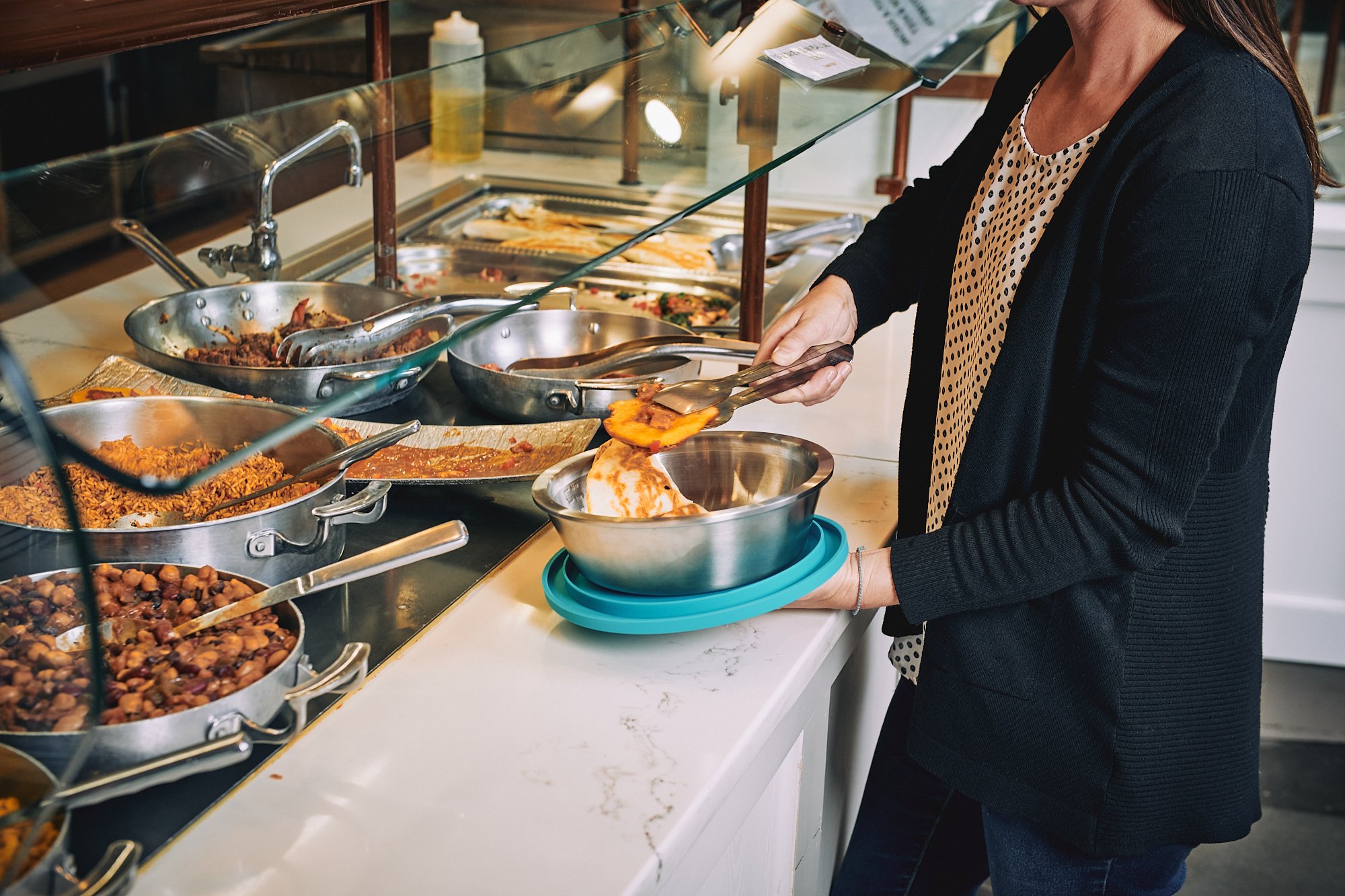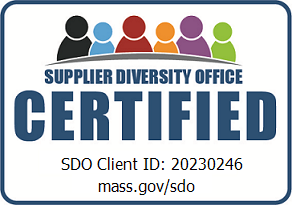It’s hard to envision from a first glance at an object, but every object chronicles where it is from, how it was made, how it traveled from place to place, and where it will go when it is no longer useful. These stages – resource extraction, manufacturing, transport, use, and disposal – make up an object’s life cycle, and each stage impacts the environment.
USEFULL containers slash waste during the use phase. But we know that creating a truly sustainable product doesn’t stop there: it requires creating a product which has a low impact throughout its life, and transparency about that process. We have spent years refining the most sustainable product, and we are excited to share it with you.
MATERIALS
First, we chose the materials which have the most minimal impact on the environment. The containers themselves are made of double walled stainless steel and are made of as much recycled material as possible without the material degrading. We use roughly 60% recycled stainless steel. Unfortunately, it is not possible to use 100% recycled stainless steel because the material loses some durability; in order for the cups and bowls to last for many uses, the containers must contain some virgin material. However, USEFULL uses the least amount of virgin material possible.
Next, USEFULL lids are composed of 100% food grade silicone. Silicone is primarily composed of silica, which is sourced from sand, and since silicone can withstand extreme temperatures, silicone products last for decades. The material isn’t perfect – petrochemicals are used to manufacture it, and it is not biodegradable. However, these products are durable and less easily damaged than plastic products, which causes them to be discarded less often and thus produce less waste, not to mention avoiding the health concerns of plastic.
MANUFACTURING
Several steps go into turning stainless steel into a USEFULL container. First, the stainless steel sheets are rolled out. Then, an industrial die stamps out the sheets. From there, the manufacturing team forges the two sheets together to make a double layer and vacuum seal the new formation. Then manufacturers hand-stamp logos onto the containers. Our designs maximize the amount of metal used in the stamping process to eliminate materials waste and use less water.
PACKAGING
USEFULL carefully ensures that our packaging makes a minimal impact on the environment. The large master carton is made of recycled cardboard; inside, the carton contains no plastic, styrofoam, or packing peanuts, only a thin recycled tissue to make sure that the bowls and cups do not scratch in transit.
USE
The next stage of a product’s environmental impact is the phase in which it is actually used. There are only two resource inputs for USEFULL containers: the water and energy used for dishwashing. Our containers are designed to be washed the same as all dining hall dishes: they can be placed in the same high-efficiency machines as all other dishes.
DISPOSAL
While USEFULL containers last for at least three years, eventually they need to be retired. USEFULL recommends that at the end of each semester, universities should examine their inventory for items with dents or other damage. If a container or lid is no longer usable, universities should send the containers back to us. Since stainless steel is 100% recyclable and we work with a facility that recycles silicone, we then take the containers and lids to a local recycler. From there, the materials become a new product, and the process begins again.
BOTTOM LINE
During the design process, we prioritized ensuring that the products are built to be long-lasting, and to fit into a larger circular economy. And we are in the process of learning even more about the complete environmental impact of our product – we are currently applying for a grant to conduct an official life cycle assessment (LCA) and quantify how our containers’ impact relates to that of plastic.
If you are interested in learning more about USEFULL, feel free to drop us a line here!
Disclaimer: This is an overview of the environmental impacts of USEFULL cups and containers and is not an official life cycle assessment.
By Karlie Hayes, Marketing Strategy Intern, karlie@usefull.us









